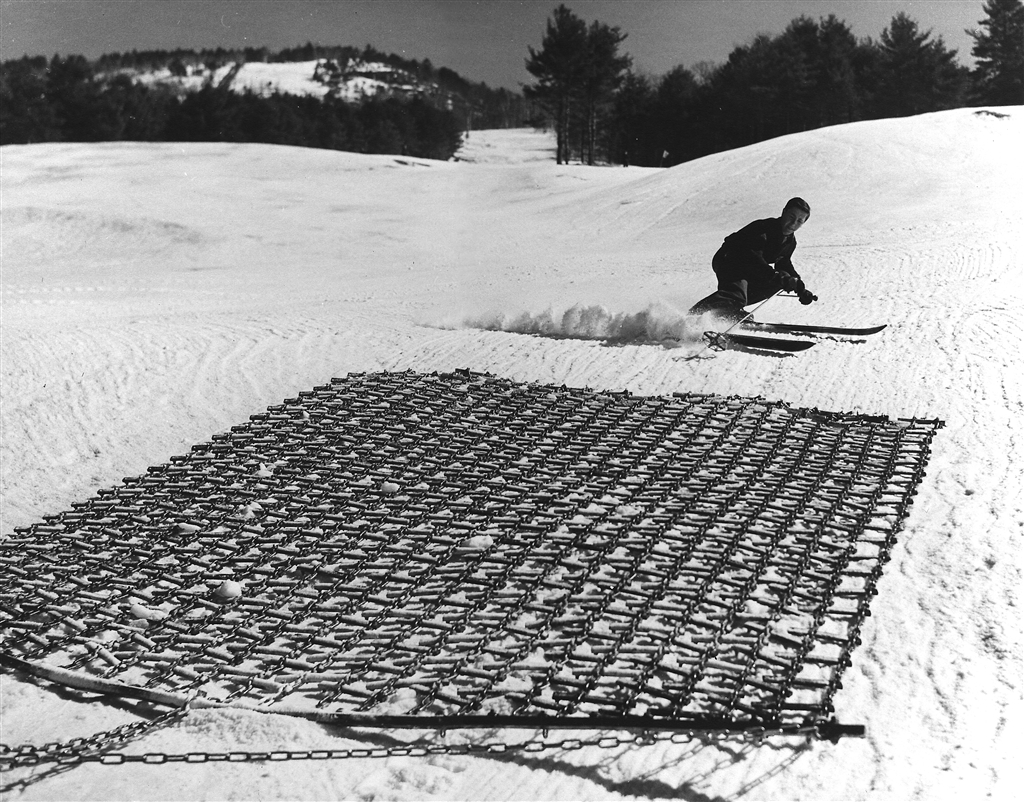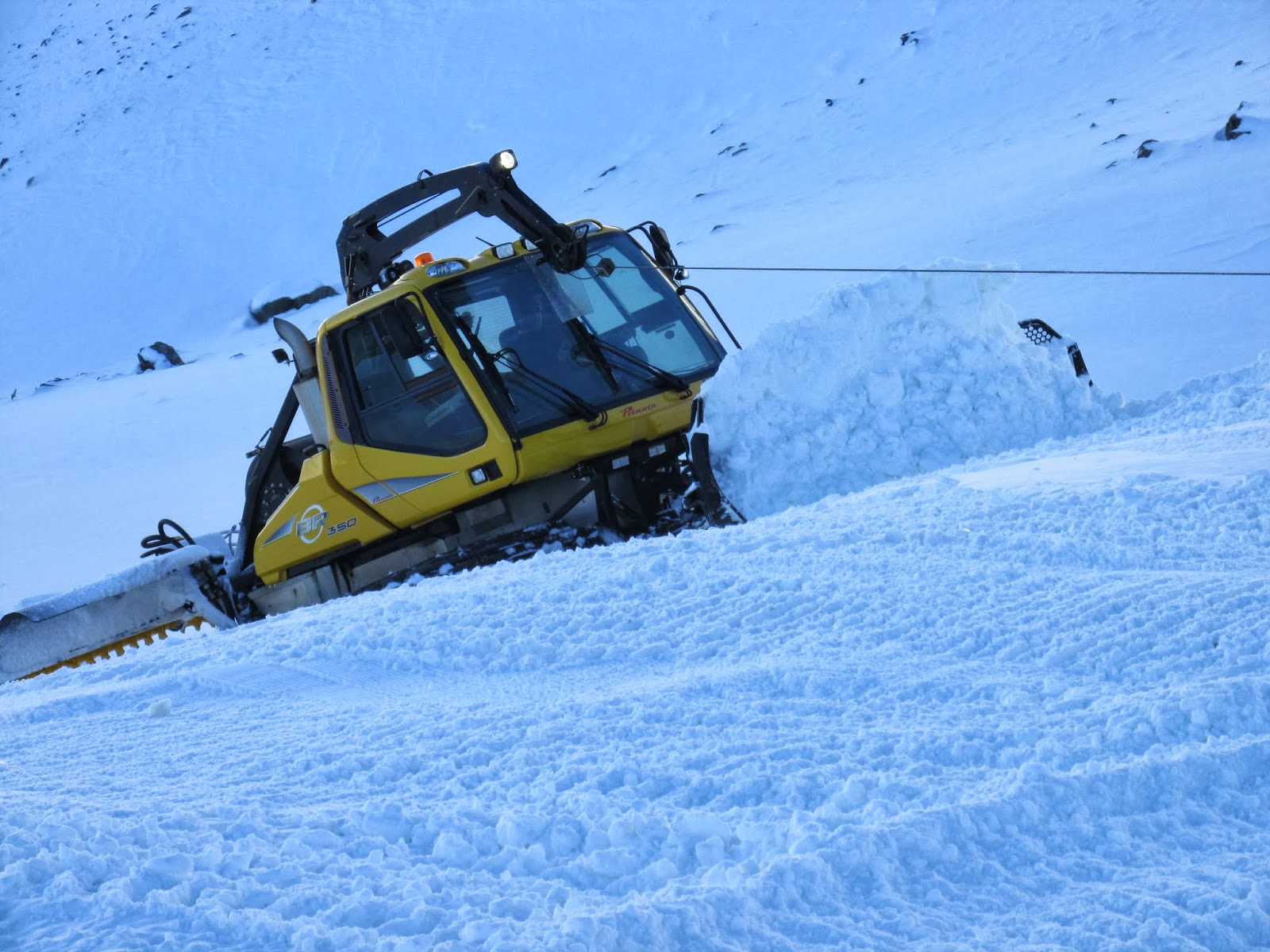
Welcome to Origins. In this new weekly series, we will take deep dives into the beginnings of key aspects of the snowsports industry. We will uncover the people, places, and progression of each topic and hope to gain some insight into what the future holds.
For the first installment of Origins, we will look at groomers. You know, the machines that help make that buttery smooth corduroy for us to lay down some early morning turns on.

Grooming snow occurred much before the invention of the ski lift or ski trails. Originally, heavy snow-covered roads were compacted by teams of horses hauling large agricultural rollers across them. The goal was to make the roads easier to cross in sleighs and sleds.
A similar approach was used by Mt. Cranmore Resort (NH) as early as 1939 to compact their early snowfalls. They used agricultural rollers driven by a Caterpillar tractor to compact the snow. European resorts in the same era were also implementing similar techniques. The issue was that the repetition of rollers on the snow surface did nothing to break up the hard ice that eventually formed. The solution…a mat called a magic carpet. This mat which was pulled by a similar tractor helped break up the snow and prevent the hard surface from forming. While it worked, they still needed to manually shovel snow in spots to help keep the surface nice.

For the western U.S., the soft snow made it impossible to use tractors or other heavy equipment to groom snow without sinking. WWII came to a close and even with the invention of early snowmobiles, there was still the over-snow machine yet to be seen that could haul rollers and mats. The lighter, less dense snow made it seem as if grooming wouldn’t be possible out west.
The breakthrough for the west came at Winter Park, Colorado, in the 1950s. Steven Bradley and Ed Taylor began working together to find a solution to their grooming problems. Bradley began to manage Winter Park Resort in 1950 and Taylor was both on the board of directors of Winter Park Resort and a former chairman of the National Ski Patrol. His former work with mitigating avalanches spurred his interest in finding a solution to the western grooming problem.
In the beginning, Bradley had no success in convincing the Winter Park Resort Board to invest in grooming. They thought that skiers would not care for a smooth surface over moguls. To prove them wrong, Bradley used his own time and money to groom half of a run known as Village Way. After grooming he watched skier behavior and saw that an overwhelming majority were using the smooth surface over the moguls. This was the evidence needed to convince the board to invest in making a new grooming machine.
To this day, the blue/black run known as Bradley’s Bash is half groomed with the other half containing massive moguls.
With funding, the two designed what was then called the Bradley Packer-Grader in 1951. This device consisted of a steel blade (to cut off the top of moguls or inconsistencies within the snow) followed by a slat roller (it both compacted half of the snow and powdered the top surface). The device was operated by a skier who would ski fall line down the mountain. In a v-shape formation; teams of skiers would be able to quickly re-surface trails. The same year, Bradley filed for a patent.


The patent was approved in 1957, which stated: “apparatus for grading and packing snow.” Within the same year, Bradley mounted the Bradley Packer-Grader behind a Kristi snowcat. The Kristi snowcat had recently begun production in Arvada, Colorado. Adjustments were added including a hydraulic cylinder that controlled the steel blade height. Thiokol Corporation then licensed the rights to produce the Bradley Packer-Grader technology in combination with the snowcat production operation. It was here that the modern groomers were conceived.
A lot of work went into the modern snowcat groomers that we see today. That fresh corduroy each morning has a long history behind it. Today, we have a wide variety of snowcats that help groom and shape different parts of a resort. Some have winches to help climb steep slopes, some have attachments to help cut half pipes. Recent improvements have focused on mitigating fuel usage to make these big machines cleaner for the planet.
Hope you enjoyed the first edition of Origins. Stayed tuned for next week’s edition!

